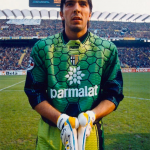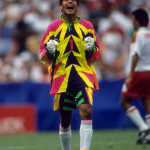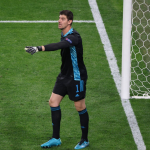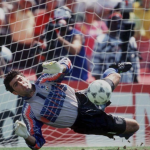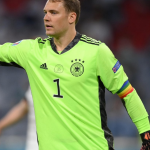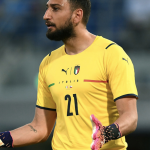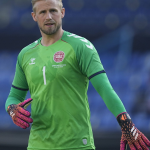.png)
The EURO2020 goalkeeper kit parade
Journey through the Europeans and the lost aesthetics of goalkeeping
June 22nd, 2021
The golden era for goalkeepers kits started from the early 1990s to the early 2000s.
It is impossible to forget the USA 94 kits or those of clubs like Parma, which have remained engraved in our memory. The jersey followed and still follows different aesthetic canons from the rest of the team, designed with colours that deviate from the official chrome. But over time this aesthetic has evolved, as has the role of the goalkeeper. Nowadays the goalkeeper covers larger portions of the field, he is no longer confined to his own area, proof of this is Ederson, who this season alone in the Premier League has made two assists with an average of 28 passes per game. The evolution of this role has gone hand in hand with the aesthetics and design of the jerseys. The oversized, super-coloured uniforms that we all dreamed of have given way to super-technological, breathable and above all monochrome and often fluorescent slim-fit models.
In RP Marketing's ranking, the jersey is still the best-selling item in a football club, but not the goalkeeper's jersey. Leading this special classic is Manchester United with 1,750,000 jerseys sold. The attractive designs chosen are now the same for every national team or club, making the whole thing a bit more boring and explaining - at least in part - why sales don't take off as they once did. EURO2020 confirms this trend, all goalkeeper kits are the same, making a role that is actually fundamental to the game of football boring. We tried to trace the strategies and modus of each brand present at the European Championship, from Nike to adidas via PUMA, here are all the choices.
NIKE
Nine national teams and therefore goalkeepers will take to the pitch with the Swoosh on their shirts: Holland, England, Turkey, Croatia, Slovakia, France, Finland, Portugal and Poland. Nike's strategy for the American brand is to use the same time template, Gardien III, for all national teams and clubs in different colours: neon green, grey or orange. A captivating and sophisticated design that certainly makes the shirt lively in the eyes of the spectator, but which, repeated for an entire season plus the Europeans, certainly risks becoming boring.
adidas
Like Nike, the German brand also proposed the same strategy by applying the same model, Adipro 20 Goalkeeper, for Belgium, Spain, Wales, Scotland, Russia, Germany, Hungary and Sweden, the eight teams that will have the three stripes on their kits. Bold graphics to stand out from the crowd, adidas adopted a simple and minimalist style. A monochrome fluorescent green or black jersey with two side stripes, already seen in national competitions.
PUMA
Italy, Czech Republic, Switzerland and Austria are the national teams that wear PUMA, which has distinguished itself between the two competitors by using three different concepts. But PUMA has not abandoned the patterns used by the clubs this year either, such as the shirt with the "sublimated hexagon" weave used by Switzerland and Austria mainly. The second concept used instead takes up the new away jerseys of the Europeans, simple and the same as those of the other teammates who obviously differ only in colour. The third and last one we saw in Italy-Wales. Both Donarumma and Sirigu played in a dark grey jersey that echoes the Renaissance pattern of the Azzurri's first uniform.
HUMMEL, JAKO e JOMA
Now we come to the brands that have only one representation, namely Hummel (Denmark), Jako (North Macedonia) and Joma (Ukraine). Even these jerseys do not shine for aesthetics and creativity, following the trend of the other national teams the jerseys are almost always monochrome, not fluorescent and not very bright accompanied by timid patterns to make them more attractive.








































.png)


.jpg)



.png)





.png)
.png)
.png)
.png)
.png)
.png)
.png)
.png)
.png)
.png)
